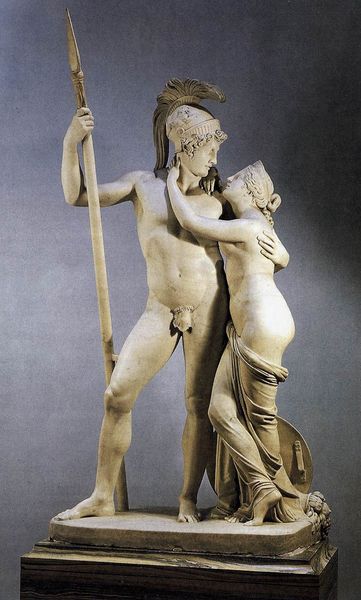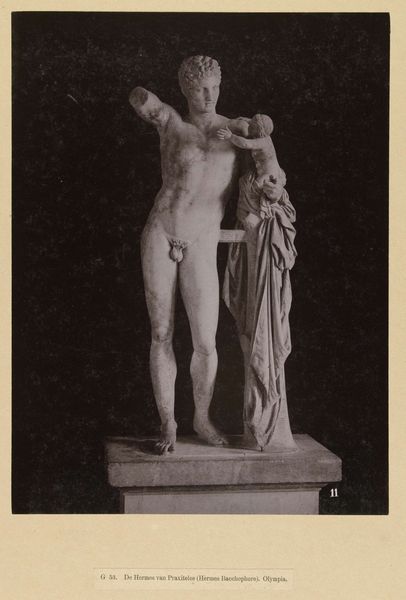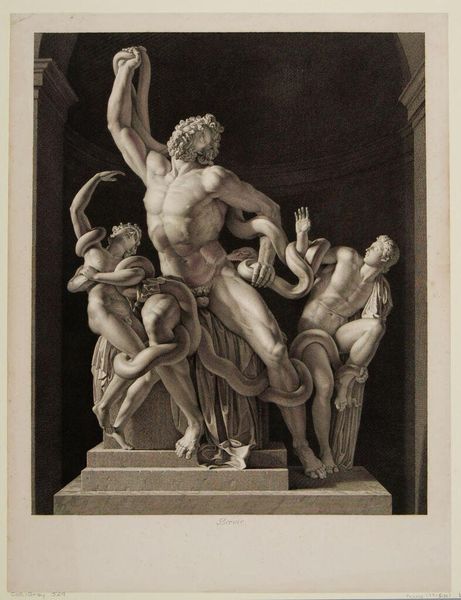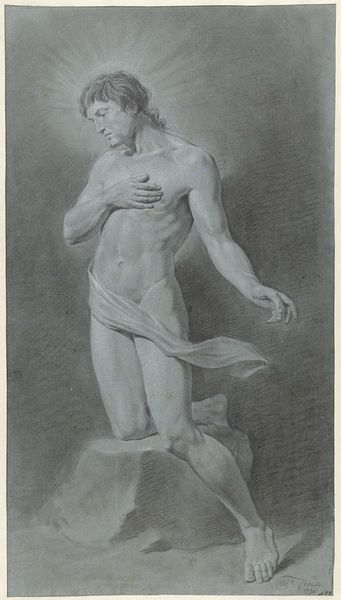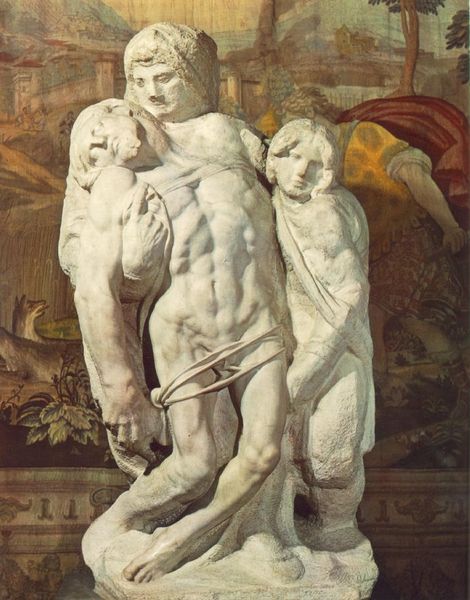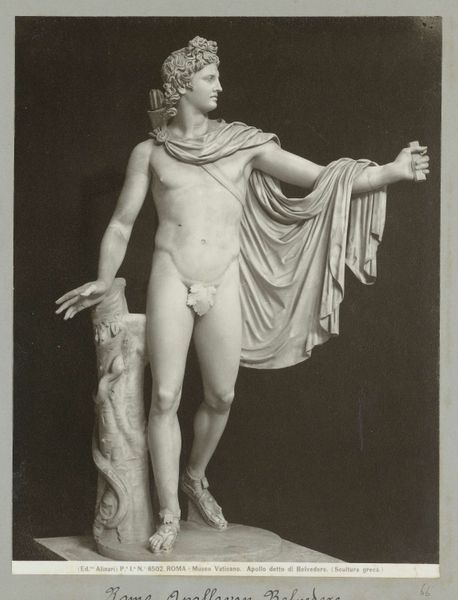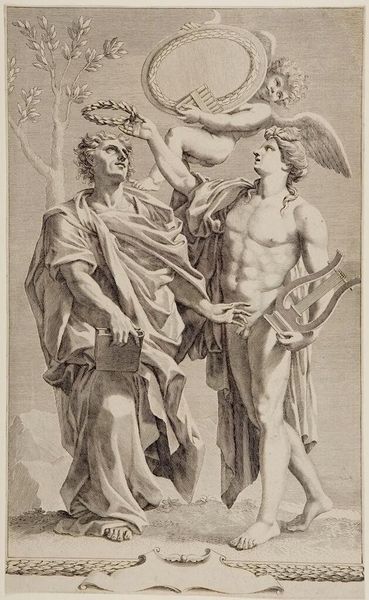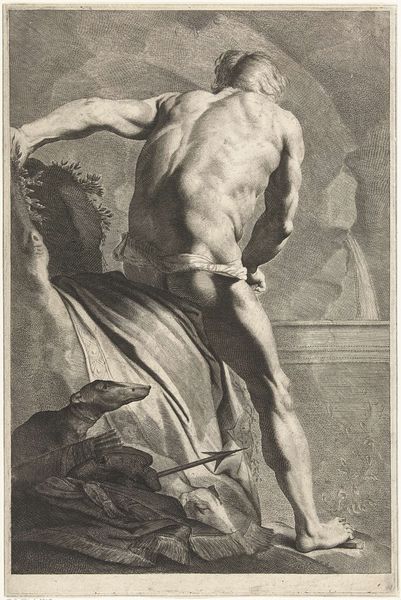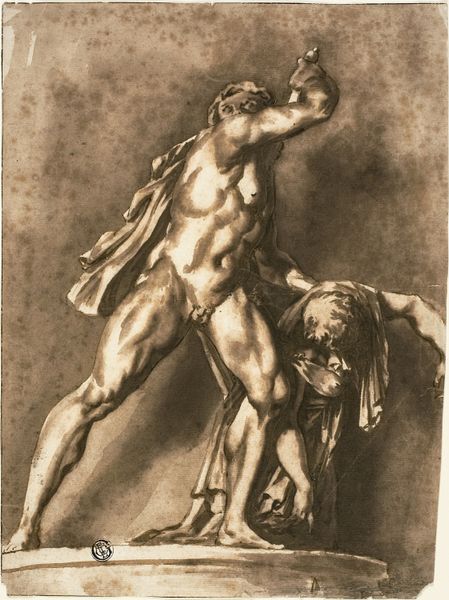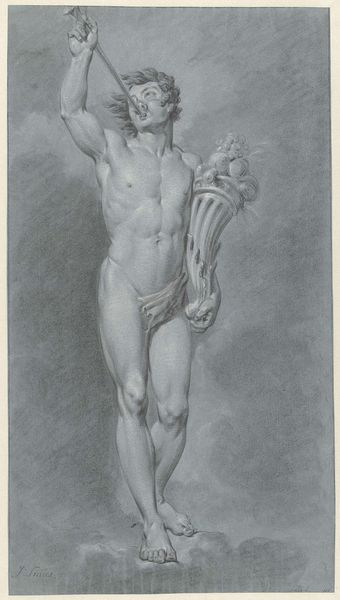
Copyright: Public domain
Editor: So, this is Ludwig Manzel’s "Peace, defended by Arms," created in 1904, made of marble. I'm struck by the rather stark contrast between the muscular, almost aggressive male figure, and the serene, delicate female figure he’s protecting. What can you tell me about the context of this piece? Curator: This sculpture really embodies the sociopolitical anxieties of its time. The early 20th century in Germany was marked by burgeoning nationalism and militarism, and that's visibly expressed here through Neoclassical allegories. Can you see how the “Peace” allegory leans on "Arms" for protection? Editor: Yes, she seems almost… vulnerable? Curator: Precisely. Now, think about who was commissioning and viewing this piece. Predominantly upper-class, nationalistic Germans. Manzel's statue reinforces a social narrative where military strength, personified by the male figure, ensures the preservation of peace, seen as a feminine entity requiring male protection. What message do you think this sends? Editor: It sounds like it's justifying militarization under the guise of protecting vulnerable groups. Curator: Exactly! The political power is embedding in public imagination! Do you see any echoes of earlier art historical trends in the formal composition? Editor: I see hints of classical sculpture and even the Renaissance preoccupation with ideal human forms. Curator: Good. And how does Manzel use those conventions to underscore his specific message? Remember the piece appeared at the moment of global realignments in terms of military powers. Editor: By drawing on those classic traditions, he gives the message a sense of timeless legitimacy, like this dynamic has always existed and should continue to. The statue really naturalizes the need for a strong military to keep the society at peace, doesn't it? Curator: Exactly. So, considering its cultural context and visual language, how would you now describe your interpretation of the sculpture? Editor: I see it less as a simple depiction of peace and strength, and more as a powerful piece of propaganda reinforcing nationalistic ideologies. Thanks! Curator: Thank you! It’s always enlightening to look at art’s impact and social history.
Comments
No comments
Be the first to comment and join the conversation on the ultimate creative platform.
